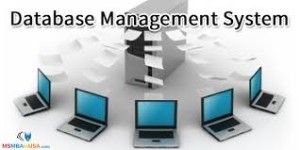 121. Describe middleware applications that ease the connection of databases to Web applications.
121. Describe middleware applications that ease the connection of databases to Web applications.
Both ASP and ColdFusion are middleware that ease the connection of databases to Web applications. Both require the use of several files. Both use tags and are executed on the server. Both Internet Explorer and Netscape can access these files. The programmer does not need to be concerned with the client when they work with this middleware.
122. Describe JavaScript and VBScript.
JavaScript shares many features with Java. Developers use it to achieve interactivity. JavaScript is an open language and does not require a license. It is supported by both Internet Explorer and Netscape. VBScript is similar to JavaScript. It is based on Visual Basic but is simpler. Microsoft developed this language.
123. Describe Web Services.
Web Services are improving the ability of computers to communicate over the Internet. These services use XML programs and usually run in the background. Easier integration of applications may be possible because developers do not need to be familiar with the technical details with applications that are being integrated. UDDI is a technical specification for creating a distributed registry of Web services and businesses that are open to communicating through Web services.
124. Provide an overview of XML.
XML is used to structure and manipulate data involved with a browser and is becoming the standard for e-commerce. XML uses tags that are similar to HTML in that they use the angle brackets, but XML describes the content whereas HTML describes the appearance. The XML schema standard was published in May 2001 by W3C.
125. Describe Website security issues.
Website security issues include unauthorized access to the several aspects of one’s Website. Security measures should include all aspects of the system such as the network, operating level, database, and Web server. Regular monitoring and security testing by a company should help to avoid intrusion into one’s system.
126. Explain the role of metadata for the three-layer architecture.
Each of the three layers has a metadata layer linked with it. The metadata layer describes the properties or characteristics of the data. The operational metadata describe the data used in the various operational and external systems. The enterprise data warehouse metadata describe the reconciled data layer. The data mart metadata describes the derived data layer.
127. Describe why operational and informational systems are separate.
Operational systems are used to run the business in real time on a daily basis and contain current data. Non-managers and non-analysts work in this type of system. Operational systems must process large volumes of data. Informational systems are used to support decisions and contain historical data. Managers and analysts work in this type of system. Informational systems have periodic batch updates.
128. Describe a data warehouse.
A data warehouse is organized around specific subjects. The data is defined using consistent naming, format, and encoding structure standards. The data contains a time element, so that the data can be studied for trends. No data in a data warehouse can be updated by end users.
129. Explain why an information gap exists in most organizations.
One reason that an information gap exists is the fact that systems have been developed in separate, segmented efforts. This has helped the data from being stored in an integrated database and thus the data is in an inconsistent structure. The other reason for the gap is that most systems are created to support the operational aspect of an organization. The systems were not developed for decision making.
130. Describe the differences between a data warehouse and data mart.
A data warehouse is for the enterprise and contains multiple subjects. A data mart is for a specific functional area and focuses on one subject. A data warehouse is flexible and data-oriented and contains detailed historical data. A data mart is restrictive and project-oriented and contains some historical data.